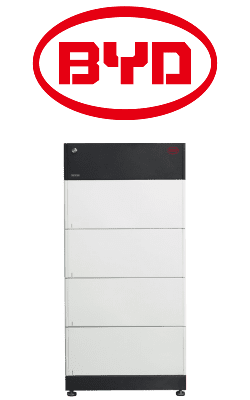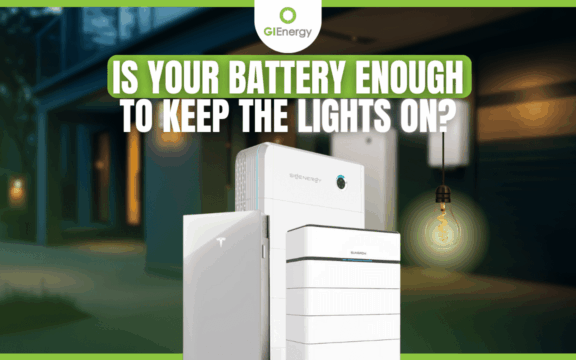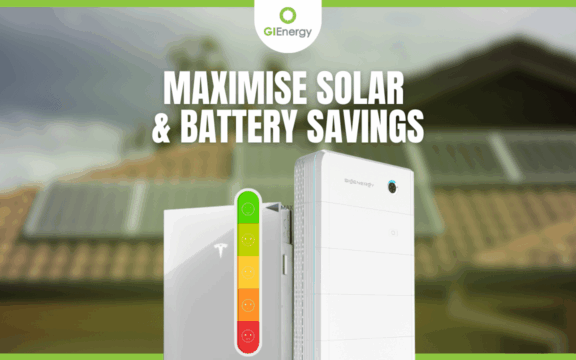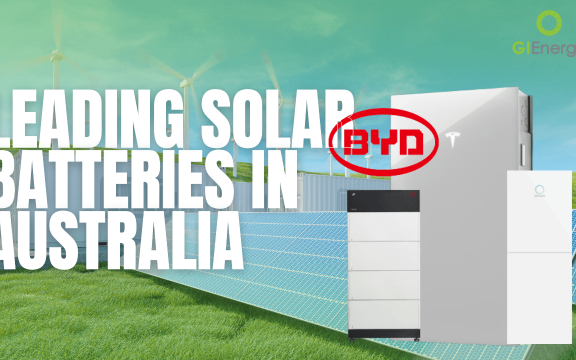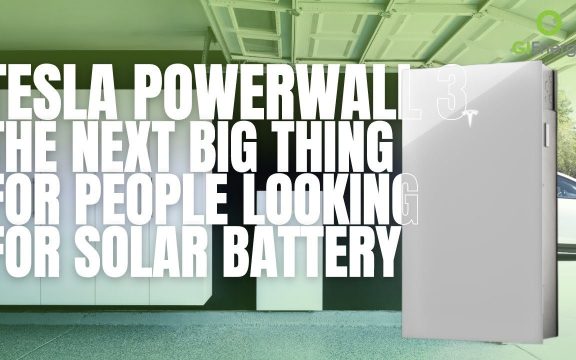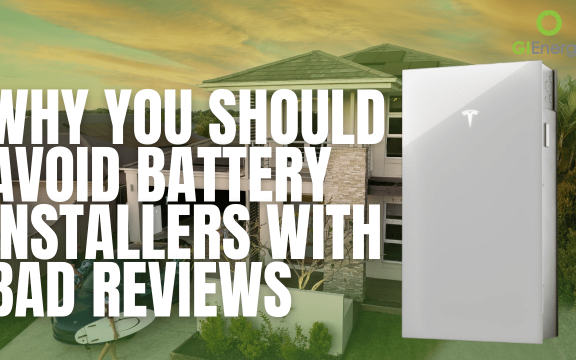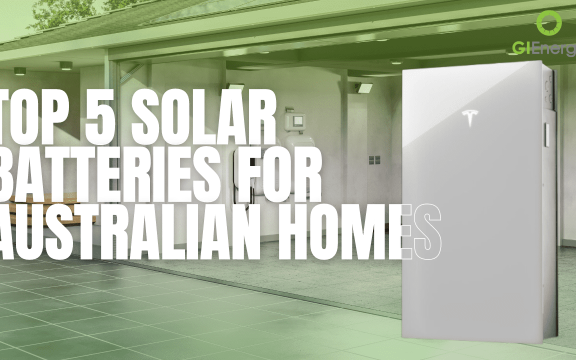What are Solar Battery Storage Systems?
A solar battery storage system is a device that stores the excess electricity generated by solar panels for later use. It allows homeowners to store energy during the day when the sun is shining and use it at night or during periods of low solar production.
The main purpose of a solar battery storage system is to increase energy independence and self-consumption of solar power. It provides backup power during grid outages and can help reduce reliance on utility companies.
The key components of a solar battery storage system include:
- Solar panels to generate electricity from sunlight
- A battery bank to store excess electricity
- An inverter to convert the stored DC power to usable AC power
- A charge controller to regulate the flow of electricity between the solar panels and batteries
- Monitoring and control systems to optimize energy usage
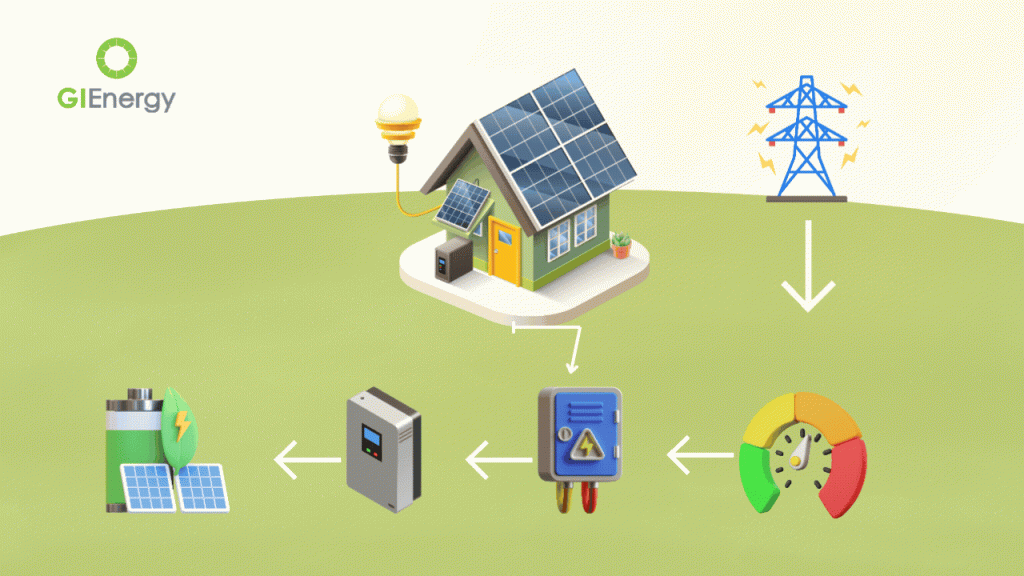
Having a solar battery storage system offers several benefits, such as increased energy independence, backup power during outages, and the ability to use more of the solar energy you produce. It can also help reduce electricity bills and your carbon footprint.
High-voltage vs Low-voltage Solar Batteries
High-voltage solar batteries typically operate at voltages above 48V, while low-voltage batteries operate below 48V, usually around 12-24V. The main advantage of high-voltage batteries is their higher discharge rate, allowing them to support higher load demands more efficiently. However, they tend to be more expensive upfront. Low-voltage batteries are more cost-effective but may struggle with high power loads.
Pros of high-voltage batteries include faster charging, higher efficiency, and better performance for running larger appliances or devices. Cons are the higher upfront cost and potential safety concerns due to the higher voltages involved. Low-voltage batteries are cheaper initially but less efficient, with lower discharge rates unsuitable for heavy loads.
Factors to consider when choosing include your power needs, budget, and safety priorities. High-voltage is ideal for powering an entire home but requires careful installation. Low-voltage suits smaller applications like RVs, boats or off-grid sheds where efficiency is less critical.
Tesla Powerwall 3: An Overview
The Tesla Powerwall 3 is a fully integrated AC battery system for residential or light commercial use. It stores energy from on-site solar or from the utility grid, providing backup power, increased self-consumption of solar, and load shifting capabilities.
Key features and specifications of the Powerwall 3 include:
– 13.5 kWh energy storage capacity
– 11.0 kW continuous power
– Lithium ion battery with liquid thermal control
– Integrated 10kW hybrid inverter – all in one solution
-Up to 20kW of panels can be installed
-Blackstart function with up to 185A start

Some advantages of the Powerwall 3 are its high efficiency, liquid thermal control for enhanced battery performance, compatibility with Tesla solar products and monitoring apps, and 10-year warranty. Potential disadvantages include its relatively high cost compared to some competitors and the requirement to use Tesla-approved installers.
BYD Battery-Box Premium HVM: An Alternative
The BYD Battery-Box Premium HVM is a scalable lithium iron phosphate (LFP) battery storage system designed for residential and commercial applications. It offers a modular design, allowing for capacities ranging from 8.28kWhs to 16.56kWhs per stack. You can also add multiple stacks for even more storage.
Key features of the BYD Battery-Box Premium HVM include compatibility with single and three-phase inverters, cobalt-free LFP battery chemistry for enhanced safety, and a depth of discharge of up to 95% (Intelligent Controls, 2023). The system can operate in both off-grid and on-grid modes, providing flexibility for various energy storage needs.
One of the main advantages of the BYD Battery-Box Premium HVM is its scalability, allowing for future expansion as energy needs grow. Additionally, the use of LFP chemistry enhances safety and extends the battery’s lifespan. However, it may have a higher upfront cost compared to some competitors, and its performance may vary depending on the inverter and system configuration.
Comparison: Tesla Powerwall 3 vs BYD Battery-Box Premium LVL
Side-by-side Comparison of Key Features and Specifications
The Tesla Powerwall 3 and BYD Battery-Box Premium LVL are both lithium-ion battery storage systems designed for residential use. However, they differ in several key aspects. The Powerwall 3 has a usable capacity of 13.5 kWh and a continuous power output of 11 kW, while the BYD Battery-Box Premium HVM startst at 8.28kWhs and can go up to 16.56kWhs per stack. You could have 3 / 4 stacks if you needed more storage too! The continuous power output of the BYD battery will depend on the inverter you pair it with so there is design flexibility there as well.
Performance Comparison
Both batteries are highly efficient, with the Powerwall 2 boasting a round-trip efficiency of 90% and the BYD Battery-Box Premium LVL offering a similar efficiency of 92.5%. However, the Powerwall 2 has a slight edge in terms of depth of discharge, allowing for a deeper discharge of its capacity without compromising its lifespan.
Read a more detailed review here.
BYD Company History and Background
BYD (Build Your Dreams) was founded in 1995 as a battery
company in Shenzhen, China. Initially focused on producing rechargeable batteries for mobile phones, BYD later expanded into the automobile industry, becoming one of the largest manufacturers of electric vehicles globally. In recent years, BYD has emerged as a leading player in the energy storage market, leveraging its expertise in battery technology to develop innovative solutions for residential, commercial, and utility-scale applications.
BYD established a presence in Australia in 2014, with the goal of introducing its cutting-edge energy storage systems to the local market. The company’s commitment to sustainable and safe battery technology has been a driving force behind its success. BYD’s energy storage solutions are built around lithium iron phosphate (LFP) chemistry, which offers improved safety and longevity compared to traditional lithium-ion batteries.
Advantages of BYD Solar Batteries
BYD solar batteries offer several key advantages for homeowners and businesses seeking reliable energy storage solutions. One of the primary benefits is their off-grid capability, allowing users to store excess solar energy for use during periods of high demand or power outages. Additionally, when paired with compatible inverters, BYD batteries demonstrate high efficiency in converting and storing solar power.
Another significant advantage is the expandability and future-proofing potential of BYD’s battery systems. For larger energy users, up to three maximum capacity batteries can be connected, providing an impressive 65.1 kWh of storage capacity. This scalability allows for seamless adaptation to changing energy needs over time.
BYD batteries incorporate smart technology that optimizes self-consumption, ensuring that stored solar energy is utilized efficiently within the household or business premises before drawing from the grid. This intelligent energy management not only maximizes the value of the solar investment but also contributes to overall energy independence and sustainability.
Lithium Iron Phosphate Chemistry: BYD is the Safer Alternative
BYD’s lithium iron phosphate (LFP or LiFePO4) batteries emerge as the safer alternative for solar energy storage solutions. These batteries utilize a cathode made of lithium iron phosphate, ensuring heightened stability and safety compared to conventional lithium-ion counterparts.
BYD’s LFP batteries offer superior safety due to their inherent thermal and chemical stability, minimizing the risk of thermal runaway and fires commonly associated with traditional lithium-ion batteries. Moreover, the non-flammable electrolyte used in these batteries further enhances their safety profile.
In addition to safety, BYD’s LFP batteries boast an array of advantages over traditional lithium-ion batteries, including an extended cycle life, enhanced performance even in low temperatures, and reduced environmental impact. These batteries are crafted without rare earth metals, rendering them non-toxic and environmentally friendly.
To get the benefits of BYD’s safer solar energy storage solution, it’s advisable to engage a professional installer like GI Energy for seamless battery installation. This ensures optimal performance and maximizes the longevity of the system, providing a reliable and secure energy storage solution for residential or commercial applications.
Cost and Return on Investment Analysis
For you to get a better idea on what are the clear differences of both batteries, watch this video:
The potential cost savings and ROI depend on factors such as local electricity rates, available solar incentives and rebates, and the system’s energy production and consumption patterns. The average Australian household can expect a payback period of 7-20 years for a solar panel system, with an ROI of 20% or more over the system’s 25-30 year lifespan.
Incentives and rebates can significantly improve the economics of a solar battery storage system. It’s essential to research the incentives and rebates available in your region to maximize the financial benefits of a solar battery storage system.
Conclusion
Hopefully this has given you a bit of a clearer solution as to which battery is best for you.
Do you value capacity? Power? Warranty? Bragging rights? Price? Whatever you want, there’s an option for you.
Want to speak to one of our experts? Get in touch!
Here are some other links you may find helpful:



